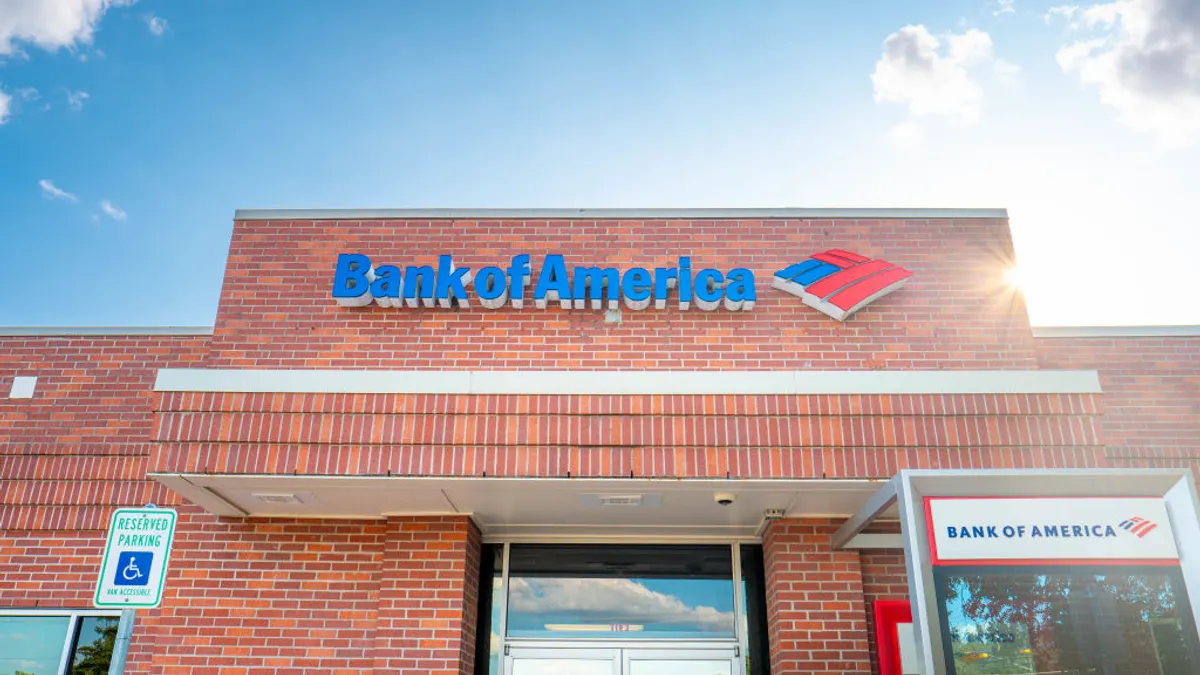LendingClub’s acquisition of Radius Bank — a $185 million transaction that closed in February — ensures a sustainable revenue model and positions the company to offer personalized products for its 3 million-strong customer base, CEO Scott Sanborn told Banking Dive.
Becoming a bank cuts down on “value leaving the building” by eliminating the need to share revenue with partner institutions, and through a cheaper cost of funds, he said. It also opens up new revenue streams, including interest income.
LendingClub delivered 93% sequential revenue growth in the second quarter, according to a July earnings report, due partly to the cost efficiencies it realized by bringing Radius Bank under its umbrella.
“We were partnering [with banks], and those banks, in 2019, earned about $30 million off of our activities,” Sanborn said. “To work with [capital] providers, we had to pool loans. We had warehouse lines, and we were paying the Fed Funds [rate] plus 330 basis points on a billion dollars.”
Using deposits to pool loans — the cost of deposits for Radius Bank, when it was acquired, was around 28 basis points — cut LendingClub's cost for that activity by 90%, Sanborn said. LendingClub was also able to cut compliance costs, because despite working with a partner, the company built significant infrastructure to support the roughly $1 billion in loan volume it was churning every month. On top of that, becoming a bank means adding interest income as a revenue stream. The bank plans to hold 15% to 25% of loans on its balance sheet, Sanborn said.
“We're basically knocking out expenses and having revenue for doing the same activity,” he said. “What's powerful about that is it's independent of loan originations.”
By becoming a bank with its own balance sheet, LendingClub benefits from regulatory clarity around its operations, given recent challenges to the third-party partner model. That’s significant because it gives the loans' backers — in LendingClub’s case, institutional investors like banks, hedge funds and asset managers — a vote of confidence.
“It puts us in control of our own destiny,” he said. “The partner bank model has come under multiple challenges both on state level and on the federal level. No one questions [the concept of] when a national bank makes a loan, that loan is valid.”
'Not well-served'
The long-term vision for LendingClub Bank differs from brands, like Current, Chime or Varo, that cater to a disillusioned or underserved younger clientele, Sanborn said. Rather, LendingClub aims to zero in on what he calls the “not well-served” — customers who are typically banked, a little older than those of other neobanks, and have accumulated some assets.
About half of LendingClub’s customers come back in five years to take out a second loan — at which point the company aims to extend additional offerings that are relevant to their situations, Sanborn said.
“The affinity is very strong, and they're coming back, for the most part, directly to us,” Sanborn said. “But imagine, when we add a banking platform that we can not only help them with their lending, we can help them with their spending and with their savings, and we would have a much richer engagement platform that's generating data to help us underwrite [and] help us create value for them.”
The company said it intends to use customer data to personalize interactions and product offers.
“Roughly half of those customers give us access to their checking accounts,” Sanborn said. “We're effectively — with our customers' permission and support — keeping an eye on their income and expenses, and delivering tailored offers to help them find savings.”
Using what it knows about customers’ transaction patterns, the bank could proactively suggest new products and moves that could help them save more effectively, including aligning bill payment days with direct deposit inflow times, Sanborn said. As the company grows its product suite, new priority product areas include auto loan refinancing and point-of-sale financing. (The company acquired purchase-financing company Springstone in 2014.)
'Double-edged sword'
John Popeo, a partner at bank consultancy The Gallatin Group, acknowledged that becoming a bank benefits LendingClub from a regulatory compliance perspective.
“Being able to originate the loan rather than relying on a partner bank is beneficial to them," he said. "Also, complying with an established well-known body of laws and regulations, subject to the Office of the Comptroller of the Currency supervision and regulation, is also beneficial, rather than having to comply with different state-based laws and regulations.”
And while fintechs that become banks can engage with regulators as they evolve their products, there is an added burden of responsibilities, he said.
“It’s a double-edged sword,” Popeo said. “You now have the ability to directly engage examination staff, but you have to be careful about what you do in a way such that you are committing to engage in permissible activities that banks are authorized to engage in, rather than engaging in a broader array of commercial activities that are not banking activities.”
Completing the transition from a single-product offering to a broader financial platform will be a major focus for LendingClub, Sanborn said.
“The big focus is executing at pace the transition from let's call it a primarily single-product company, to a multi-product company,” he said. “What keeps me up at night is, are we making all the right moves, in the right sequence around organization design and investment in tools, and are our business processes keeping up with this big, big change? I believe we have a massive opportunity in front of us."




















